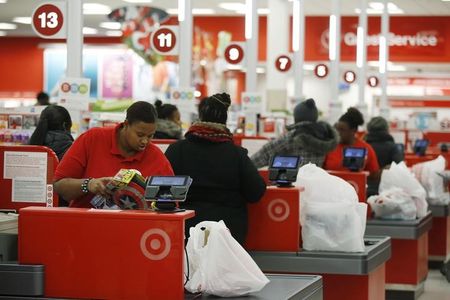US retail sales unexpectedly rise in August
2024.09.17 09:03

Investing.com — US unexpectedly rose in August, potentially soothing some concerns over a broader economic slowdown ahead of a major Federal Reserve interest rate decision this week.
On a monthly basis, retail sales increased by 0.1%, slowing from an upwardly revised expansion of 1.1% in July, according to data from the Commerce Department’s Census Bureau on Tuesday.
Economists had anticipated a fall of 0.2% in the figure, which is not adjusted for inflation and mostly tracks goods.
Excluding gasoline, automobiles, building materials and food services, the measure edged up by 0.3% last month, compared to an upwardly revised 0.4% in July. These so-called “core” retail sales feed into the reading for gross domestic product, which is estimated to have grown by roughly 2.5% on an year-on-year basis in the July-September quarter, down from a rate of 3.0% in the second quarter.
Traders are focused on the conclusion of the Fed’s latest two-day meeting this week. With markets already pricing in the beginning of an easing cycle that will bring rates down from a 23-year high of 5.25% to 5.5%, much of the conversation has centered around the scope of September’s decision.
According to the CME Group’s (NASDAQ:) closely-monitored FedWatch Tool, the odds of a 50-basis point cut this week — rather than a more traditional 25-basis point drawdown — currently stand at 67%.
The probabilities were even heading into last weekend, but bets for a jumbo cut were bolstered by media reports suggesting that such a reduction was still an option. Former New York Fed President Bill Dudley has also argued that a bumper cut was needed because short-term interest rates are “far above” a neutral level that neither helps nor hinders economic activity.
Indications of waning activity could spur the Fed to roll out a super-sized reduction in borrowing costs to help prop up the economy.
The latest retail sales reading is the last major data point Fed officials will have before making its decision, although analysts at Vital Knowledge said the return is “unlikely to dramatically alter” the central bank’s rate plans or wider narrative on growth.
Policymakers are also currently weighing lingering stickiness in recent consumer price growth, as well as figures pointing to a loosening in the American labor market. Fed Chair Jerome Powell said in August that the “time has come” to adjust monetary policy due to potential “downside risks” facing the jobs picture.
US stock futures were trading higher following the retail sales data, while the rate-sensitive 2-year Treasury yield ticked up. Yields typically move inversely to prices.








